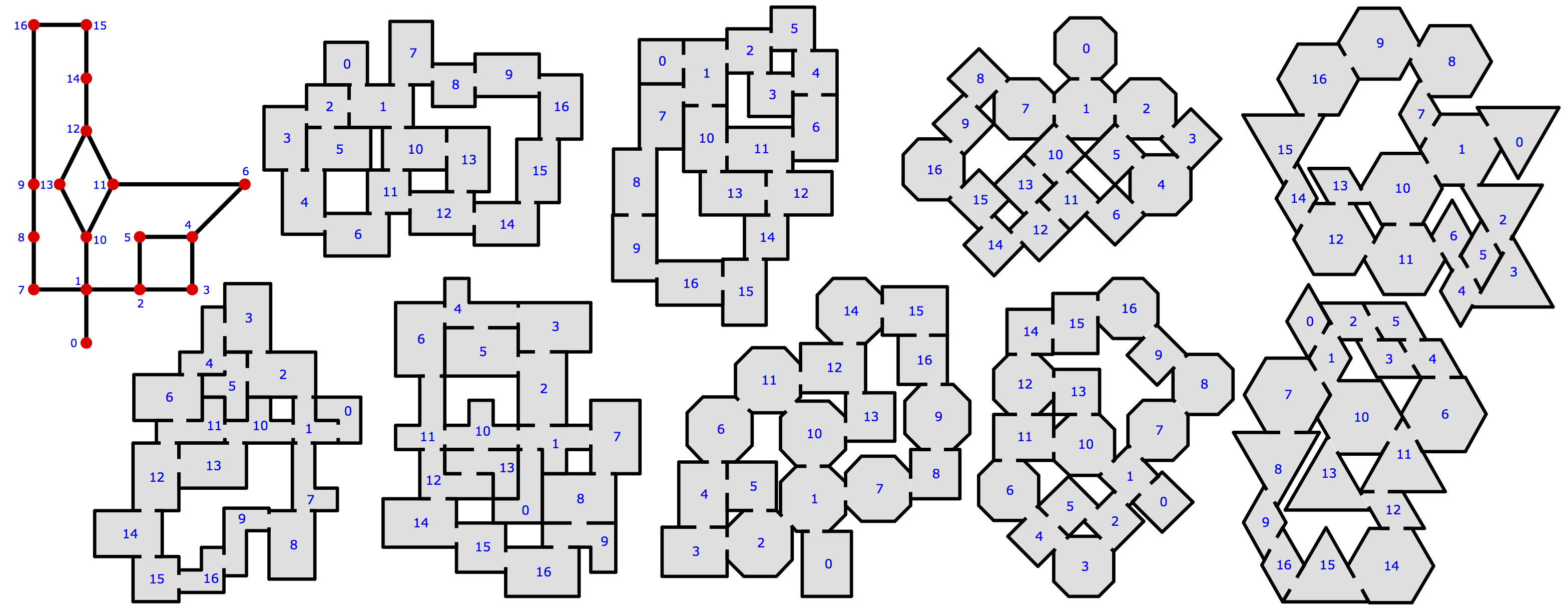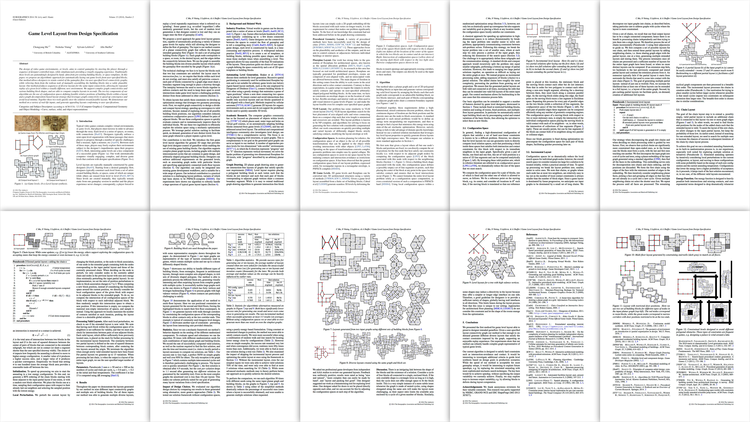Game Level Layout from Design Specification
- Chongyang Ma1,3
- Nicholas Vining1
- Sylvain Lefebvre2
- Alla Sheffer1
- 1University of British Columbia
- 2ALICE/INRIA
- 3University of Southern California

Abstract
The design of video game environments, or levels, aims to control gameplay by steering the player through a sequence of designer-controlled steps, while simultaneously providing a visually engaging experience. Traditionally these levels are painstakingly designed by hand, often from pre-existing building blocks, or space templates. In this paper, we propose an algorithmic approach for automatically laying out game levels from user-specified blocks. Our method allows designers to retain control of the gameplay flow via user-specified level connectivity graphs, while relieving them from the tedious task of manually assembling the building blocks into a valid, plausible layout. Our method produces sequences of diverse layouts for the same input connectivity, allowing for repeated replay of a given level within a visually different, new environment. We support complex graph connectivities and various building block shapes, and are able to compute complex layouts in seconds. The two key components of our algorithm are the use of configuration spaces defining feasible relative positions of building blocks within a layout and a graph-decomposition based layout strategy that leverages graph connectivity to speed up convergence and avoid local minima. Together these two tools quickly steer the solution toward feasible layouts. We demonstrate our method on a variety of real-life inputs, and generate appealing layouts conforming to user specifications.
Paper

Links
Note: We encourage free use of our technique but ask that you acknowledge our paper in your publications/products. We would appreciate if you notify us of the use.
- [ Paper 4MB ]
- [ Slides 8MB ]
- [ Code and data ]
- [ BibTex ]
Copyright notice
The definitive version is available at http://diglib.eg.org/ and http://onlinelibrary.wiley.com/ .